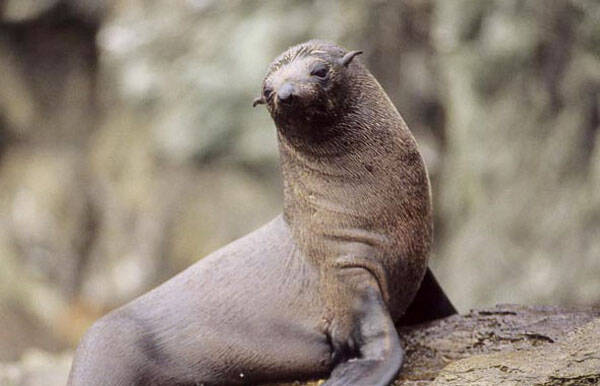Arctocephalus townsendi
IUCN
LCBasic Information
Scientific classification
- name:Arctocephalus townsendi
- Scientific Name:Arctocephalus townsendi,Paw Island fur seal, Paw Dalupe sea lion
- Outline:Carnivora
- Family:S.I. family
Vital signs
- length:1.2-1.9m
- Weight:45-170kg
- lifetime:No verification information
Feature
Long fleshy nose with a bulbous septum
Distribution and Habitat
The breeding area of North American fur sea lions is Guadalupe Island, located 200 kilometers northwest of the coast of Baja California, Mexico. Some sea lions have also begun to appear on islands west of California, USA. They live near islands, mostly occupying caves or cracks in rocks.
Appearance
The male North American fur seal is 1.8-1.9 meters long and weighs 160-170 kilograms; the female is 1.2-1.4 meters long and weighs 45-55 kilograms.
Male sea lions are much larger than female sea lions. Both males and females are dark brown or gray-black, with yellow or light brown neck hair. The interorbital forehead is flat and the snout is short. The nasal bone is medium-long, 41mm, and the skull base is 253mm long. The palate is narrow, the teeth are large, single-pointed, and there is a hollow space between 4-5 cheek teeth. The fleshy nose is very long.
Details
The North American fur sea lion (Arctocephalus townsendi) is the only sea lion living in the Northern Hemisphere. Due to excessive hunting at the end of the 19th century, only a few dozen were left, and by the 1990s, the number had recovered to about 10,000.

The North American fur sea lion feeds on fish and other animals. It is a social animal. Each group of sea lions consists of one male and multiple females, and the organization is relatively loose. June is the gestation period of North American fur sea lions.
The Red List of the World Conservation Union is listed as: Near Threatened (NT)
Listed in Appendix I, Appendix II and Appendix III of the Convention on International Trade in Endangered Species of Wild Fauna and Flora (CITES) 2019 Edition.
Protect wild animals and eliminate game.
Maintaining ecological balance is everyone's responsibility!








